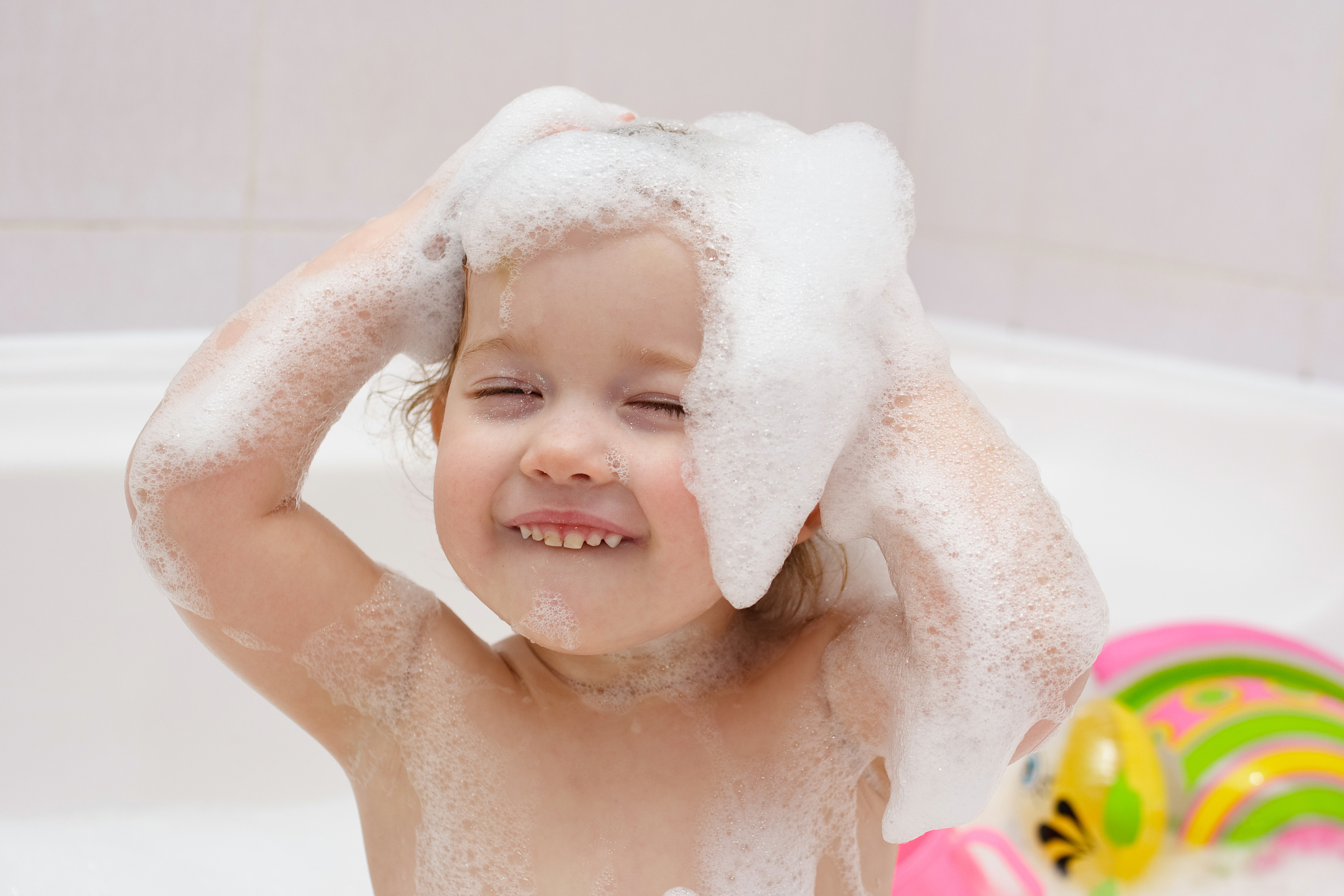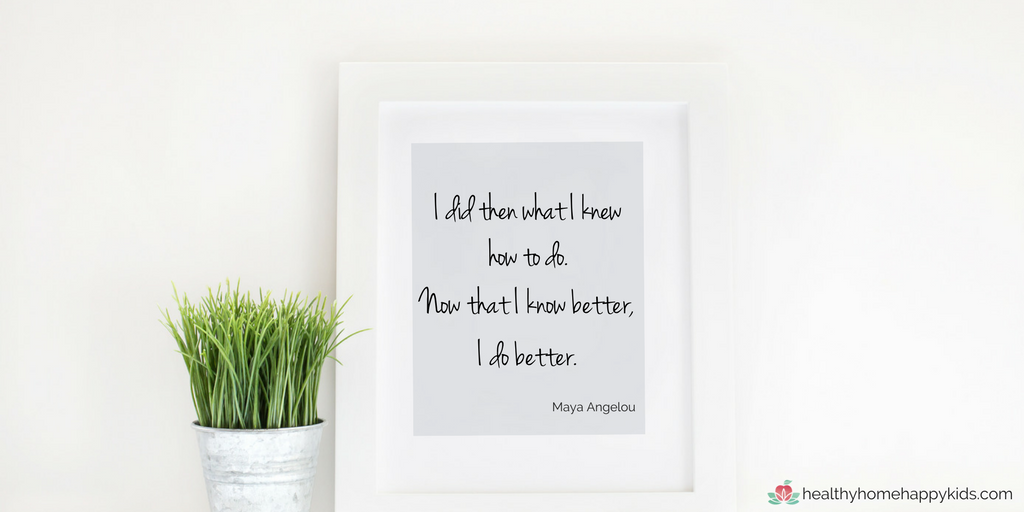
Are there hidden toxins lurking in your baby shampoo? Most likely, yes! Find out what they are in this video from my new video series “What’s in it Wednesday” that I do live each week in my private Facebook Community (want to watch live so you can ask questions, or want to catch up on all the videos? Request to join the community here).
Watch the video, or read the highlights of the transcript below!
Tonight’s topic is Johnson’s Baby Shampoo. First of all, Johnson’s Baby Shampoo did take out the formaldehyde. So, Johnson & Johnson, thank you! This is a huge step, because yes, formaldehyde is that same thing that you used in high school to dissect animals.
It’s also used in embalming fluid, and it’s known to cause cancer. It’s also linked to organ and respiratory damage, so this is definitely something you don’t want on your skin. It just does a lot of damage.
It’s parents like us, who are voting with our wallets and we didn’t buy this product, so they took out the formaldehyde. But, there are a few more things that maybe they should get out of there, too, so I’m going to take a look at the label now. The first ingredient is water, which fine. The next one though is PEG. PEG is a polyethylene glycol and you want to avoid that. This is one of those sneaky ingredients that I was telling you about.
Hidden, Sneaky Toxins
One of the concerns of PEG is the contamination concern with 1,4 dioxane. This toxin considered to be a by-product of the manufacturing process, so it is not required to be listed on product labels. The only way to know if your product contains it is to know the ingredients that can be contaminated with it, like PEG.
1,4 dioxane is a probable cancer causer and it’s linked to damage to the liver and the kidneys. It’s also listed by California’s EPA as suspected to be a toxic to the nervous system. So even though 1,4 dioxane is not listed, it is most likely in this product. As soon as you see that PEG, that’s what you should suspect.
The next ingredient is trideceth sulfate, and anything that ends in -eth is also going to be contaminated, most likely, with that 1,4 dioxane. So the next thing you want to be on the lookout for are ingredients that end in -eth, such as trideceth.
So, to recap, you want to be on the lookout for words that end in -eth, and PEG or anything that says PEG. For example, this one says PEG-80 sorbitan laurate. So, it’s a big, long name, but you still see PEG in there in capital letters. You’re going to want to definitely avoid that. And again, anything that ends in -eth. whether it’s alone or in a slew of words, such as this one that says trideceth sulfate.
Related: Is This Potential Cancer-Causer in Your Shampoo or Baby Wash?
The next ingredient after that is PEG-150 Distearate, so here’s another PEG ingredient, and the third one you see with 1,4 dioxane contamination. That means this product has multiple exposures to a “probable cancer-causer.”
Fragrance
Fragrance is considered to be a proprietary product, so companies do not have to list the single ingredients that are in their fragrance formulas. I’ve read anywhere from a several up to hundreds of different chemicals can make up a fragrance. Some of these may be cancer- causers, like formaldehyde, and other common fragrance ingredients are hormone disruptors such as phthalates. Phthalates made the news last year because studies are now also showing that prenatal exposure to phthalates are resulting in children with a lower IQ at age seven.
Sodium Benzoate
Sodium benzoate is one I want to briefly mention because it might be something you want to avoid, especially if your child has ADHD or behavior issues. If you’re familiar with the Feingold Diet, it’s one of this ingredients that can cause hyperactivity in children, so if you’re following those guidelines and avoiding ingredients in the benzoate family, it’s one of the things I would avoid.
I also avoid it in personal care products, as well, because when you put warm water on your skin, it opens up the pores. So, what you’re doing basically, is just putting potassium sorbate … Or, whatever it is. Sorry. Sodium benzoate directly on the scalp, sinking in, so it’s still getting into your system even though you’re not consuming it through food. Let’s see. Okay. Yellow 6 and Yellow 10. I also don’t like anything with the colorings, because again, same thing. They can interact with hyperactivity. They can cause it in children. Yellow food colorings are known to exacerbate asthma, so definitely something you don’t want to be using on your kids.
Yellow 6, Yellow 10
The last two ingredients are Yellow 6 and Yellow 10. These are known as artificial colors, and they are petroleum-derived. These are probably ingredients that you’re familiar with, again, if you have a child with ADHD, because artificial colors in food have been linked with hyperactivity in children. Yellow 6 is one of the most-used colorings in food, and the scary thing about it is contains the cancer-causing compound benzidine.
While we’re talking about shampoo and not food here, it’s worth mentioning because when we eat food, it goes through a digestive and detoxification process, where it’s different with personal care products. But they do get into our bodies, and actually they can do it quite quickly. And they can get directly into our bloodstream, by-passing some of the enzymes that can break toxins down.
Warm water also opens the pores, so when we are showering or bathing in these chemicals, they are allowed into our skin and bodies pretty quickly, so I strongly recommend avoiding these toxins not only in food, but in our personal care products also, which is not something we always think about.
Johnson’s Baby Bedtime Lotion
The other product I thought I would do real quick since I had it is Johnson’s Baby Bedtime Lotion. So, this one has a few different ones that I was really surprised about. It’s got Ceteareth-6, so again. It ends in -eth, which means probable cancer causer; it’s that possible 1,4 dioxane contamination.
Then you’ve got fragrance. Again, you don’t know what’s in fragrance. It could be made up of just a few to over a hundred different chemicals, and we don’t know which ones, or what they do to us.
Then you have three different parabens, which are very strong endocrine disruptor. An endocrine disruptor is anything that interrupts our endocrine system, which is made up of hormones, our “chemical messengers.” They do this by mimicking or getting in the way of a hormone doing it’s job. This is a huge problem because the endocrine system regulates every function of our body.
So you can see how endocrine disruptors can cause all sorts of health problems! It can affect anything from thyroid issues, hormone disruption, infertility, diabetes, cancer, and cardiovascular disease. It can even cause learning disorders and attention or behavior issues with your child. It affects the brain, as well.
Related: Endocrine Disruptors: What They Are & How They Affect Our Health
This product contains three different parabens: Propylparaben, Methylparaben, and Ethylparaben. So, when you’re putting this on your baby, they’re getting multiple exposures. If the word parabens rings a bell with you, it could be from when they made the news. Researchers found six types of parabens in the tumors of biopsied breast cancer tumors. And the scary thing is, there are three different parabens in this product alone!
Multiple Exposures to Toxins
The scary truth is no one knows what multiple toxin exposures do to our health. No one knows the effects of the chemicals synergistically, or how they work together. So even though some companies may say, “Well, we have those ingredients in such a small amount in there,” what about the other products we’re using?
You can easily see here the multiple exposures to 1,4 dioxane and parabens here, let alone what is in the fragrance formula.
That’s why we’ve got to become so educated, because we don’t know. But we do have control because we can control what we buy, and we can choose to buy products that don’t have these ingredients. Or at the very least, we can buy fewer of these products less often to reduce our family’s exposure.
Safer Brands for Baby
The most important thing to remember is to not beat yourself up. We don’t know what we don’t know, and we do the best with the information we have at the time. I used Johnson’s Baby Shampoo on all three of my kids. Talk about some Mom Guilt after I started doing this research! But what I realized is I didn’t know better, and now that I do, I can do better. Does that sound familiar? I love that quote from Maya Angelou!

And remember that we don’t have to get rid of everything, especially all at once. If you can remove just one or two of your most-used items and replace those with safer products, that can make a huge difference in your family’s health. Even the small changes can make a big impact!

